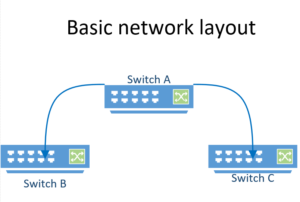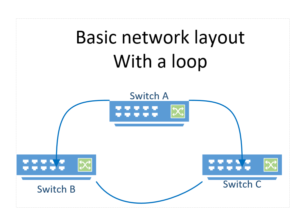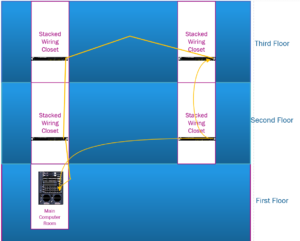Spanning Tree Protocol
IEEE 802.1D
By Scott Bailey
Spanning Tree Protocol is a standard for LOOP AVOIDANCE on a network. A loop in a local area network can bring the network down. Therefore a strategy was designed to avoid this.


Prior to the development of the standard for Spanning Tree Protocol the second graphic would have resulted in a condition known as a “broadcast storm” in which all devices on the network that send broadcasts would send their broadcast out and a loop would occur. The switches would basically be shut down.
Why do we want a loop in our network?
Fault tolerance is the primary reason to put redundant links in your network. My initial drawing is probably not the best example because it looks like three switches, probably in the same network closet. A switchport could fail or a cable perhaps and you would isolate part of your network but a more interesting scenario is when you have multiple closets or even buildings connected by fiber optic cables. Someone somewhere could break that fiber and strand a part of your network and it’s users on a virtual desert island.
If you review Graphic C below you will see a scenario where you might want those redundant links connecting your switches. Enter Spanning Tree Protocol to allow you both redundant network links while still avoiding those dangerous network loops.
How does STP (Spanning Tree Protocol) achieve this miracle? It uses an algorithm to calculate the possibility of looped links by determining a Root Bridge and the possible pathways back to the root.

The preferred link back to the Root Bridge is defined as in forwarding mode. This is the path to the root of the network that will be used. Any other port that may eventually lead to a connection to the Root Bridge is placed by the Spanning Tree Algorithm into a Standby mode which is referred to as blocking mode. In the event the forwarding port fails due to cable or hardware failure, the blocking port becomes active and enters forwarding mode. Thus, the redundant link can now work to eliminate some portion of your network from being “stranded.”
